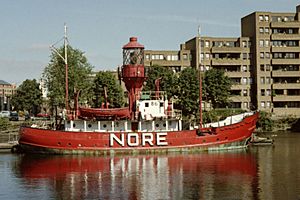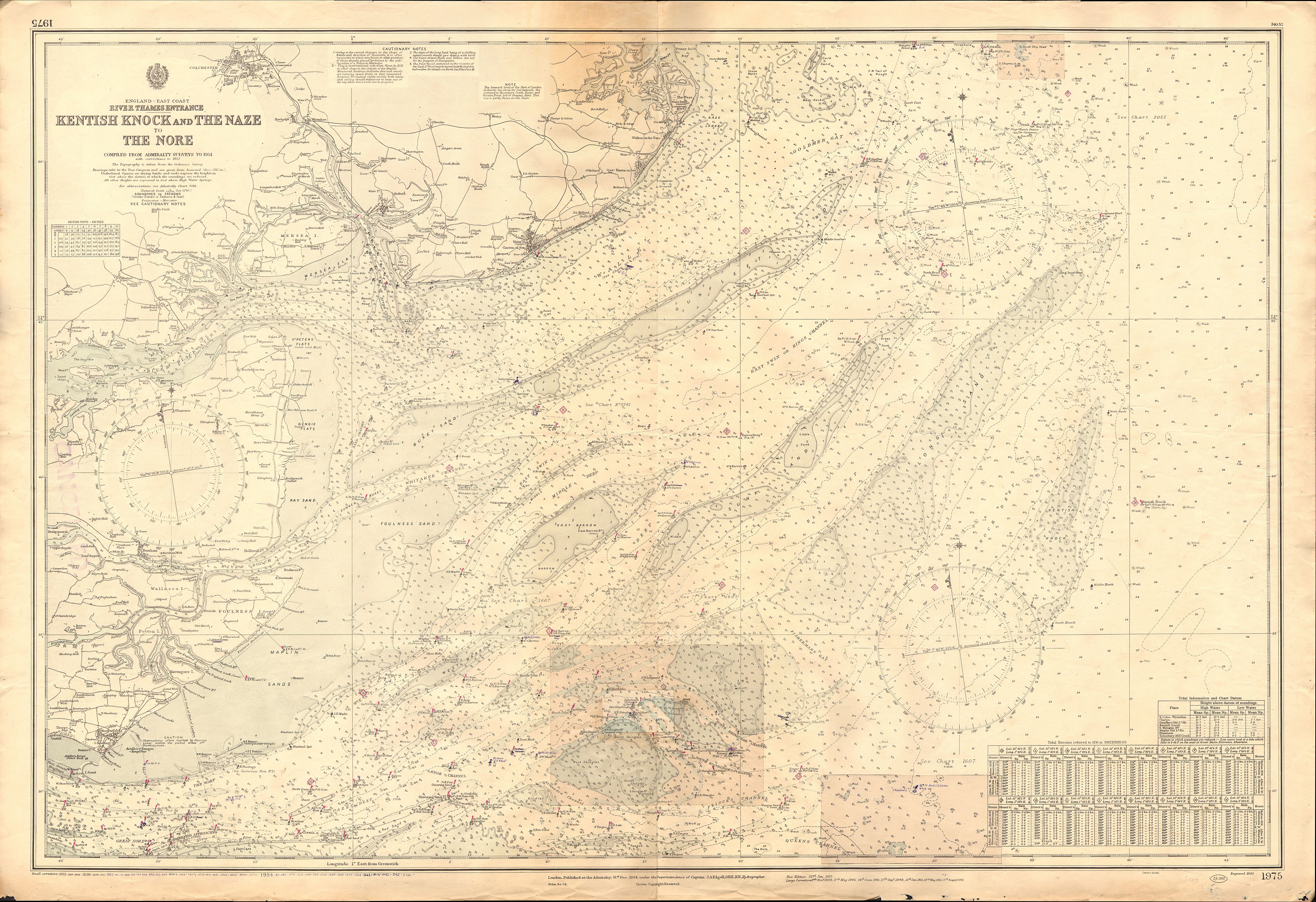Nore facts for kids
The Nore is a long bank of sand and mud. It sits in the Thames Estuary in England. The Nore Sand is a very narrow part of it. At its eastern end, where it meets the channels, there was once a famous lightship. This spot marks where the River Thames is usually said to meet the North Sea. Today, a lit buoy stands there. This spot is between Havengore Creek in Essex and Warden Point on the Isle of Sheppey in Kent.
Until 1964, the Nore marked the official edge of the Port of London Authority. The sandbank was very dangerous for ships going in and out of London. So, in 1732, it got the world's first lightship. This lightship became a major landmark. It was used as a meeting point for ships. Today, Sea Reach No. 1 Buoy marks this spot.
The Nore is also an anchorage, a place where ships can safely drop anchor. The Royal Navy used it for its North Sea Fleet. It was the place of a famous mutiny in 1797. The Great Nore is a deep channel south of the Nore. It leads to the deepest water in the area, called the Sheerness Approach.
The First Lightship
The Nore is a danger to ships. Because of this, in 1732, the world's first lightship was placed there. This was an experiment by Robert Hamblin, who invented the idea. It worked well! By 1819, England had nine lightships. The Nore lightship was managed by Trinity House. This group is in charge of lighthouses for England, Wales, the Channel Islands, and Gibraltar.
The first Nore lightships were small wooden ships. Many were built in the Netherlands. By the late 1800s, a bigger ship with a light that spun around was used. But after about 1915, the authorities stopped using a lightship there. Today, Sea Reach No. 1 Buoy marks the spot where the third lightship used to be. This is about halfway between Shoeburyness, Essex and Sheerness, Kent.
The older line, where the first lightship stood, is still seen as the official border between the Thames and the North Sea. This line runs between Havengore Creek, Essex, and Warden Point, Kent.
The Nore has been an important place for the Royal Navy for a long time. It is close to both the city and its port of London. It is also near the Medway, which was England's main naval base on the North Sea.
During the French Revolutionary Wars, a famous event happened here. This was the Nore mutiny in May 1797. Sailors were unhappy about their low pay and bad working conditions. They refused orders and took control of their ships. The mutiny ended in June. The leaders were punished, but the navy did a lot to make things better for the sailors.
From 1899 to 1955, the Royal Navy had a special officer called the Commander-in-Chief, The Nore. This officer was in charge of protecting the entrance to the port of London. They also protected merchant ships along the east coast of Britain. In the First World War, this command mainly helped with supplies and paperwork. But in the Second World War, it managed naval operations in the North Sea. It guarded against invasion and protected trade.
Wartime Forts
During the Second World War, a series of defensive towers were built in the Thames Estuary. These were called Maunsell Forts. They were made to protect London from attacks by air and sea. The Nore was the site of one of these forts, called the Great Nore Tower.
This fort had anti-aircraft guns. It was manned by soldiers from the British Army. The Great Nore Tower was finished in 1943. But it was left empty when the war ended. It was badly damaged in a ship collision in 1953. The fort was then taken apart between 1959 and 1960.



